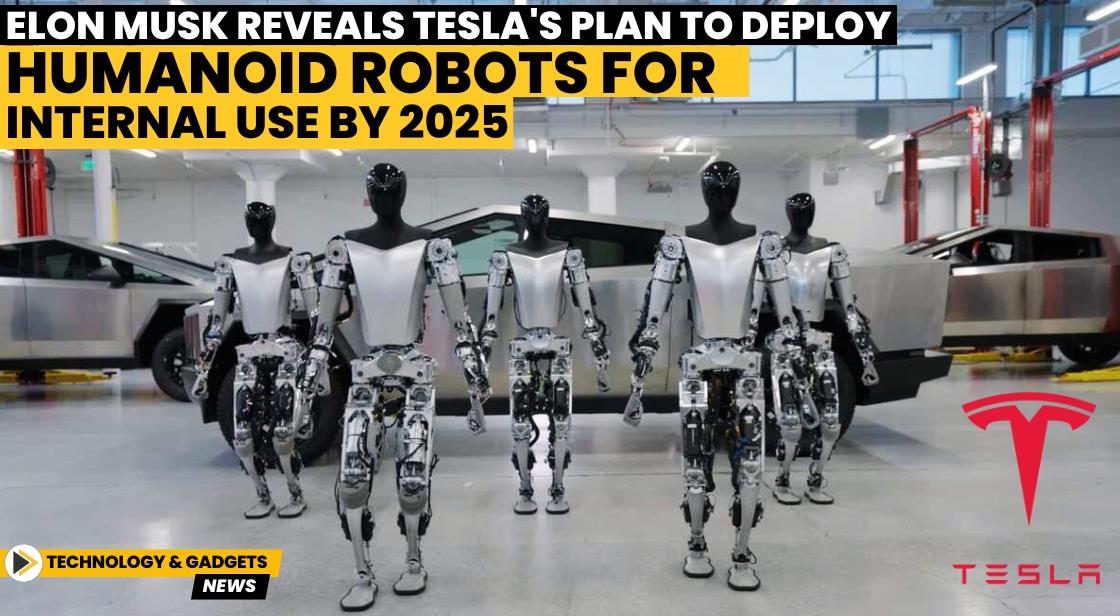Elon Musk Reveals Tesla's Plan to Deploy Humanoid Robots for Internal Use by 2025

News Synopsis
Elon Musk revealed updated plans for Tesla's highly anticipated humanoid robot, Optimus. While earlier announcements targeted a 2024 rollout, Tesla now expects low-volume production for internal use to begin in 2025. "Hopefully" by 2026, the company aims to ramp up production to meet the demands of other businesses.
Optimus Development Timeline
-
September 2022: Tesla unveils the first generation of Optimus, nicknamed Bumblebee.
-
April 2024: Musk announces Optimus' capability to perform factory tasks by year-end and potential sale by 2025.
-
July 2024: Updated timeline revealed, targeting internal use in 2025 and wider production in 2026.
Second-Generation Progress
In 2024, Tesla showcased a video featuring a second-generation Optimus robot performing a simple task – folding a T-shirt. This demonstrates ongoing development towards more advanced functionalities.
Humanoid Robots: Addressing Labor Needs and Safety
The development of humanoid robots by Tesla and other companies like Honda and Hyundai's Boston Dynamics reflects a growing interest in automation solutions. These robots hold the potential to address labor shortages and handle repetitive, dangerous, or tedious tasks in various industries like:
-
Logistics
-
Warehousing
-
Manufacturing
Musk's Track Record and Industry Challenges
It's important to acknowledge that Elon Musk has a history of missing self-imposed deadlines. Notably, in 2019, he promised a network of self-driving Tesla robotaxis by 2020, which hasn't materialized yet.
The successful implementation of humanoid robots in real-world applications presents various challenges, including:
-
Technological advancements in areas like AI, robotics, and sensors to enable complex tasks.
-
Safety considerations to ensure safe operation alongside humans.
-
Cost-effectiveness to make these robots a viable solution for businesses.
Conclusion: A Cautiously Optimistic Outlook for Tesla's Optimus
Tesla's revised timeline for the Optimus robot reflects a more cautious approach. While internal use by 2025 signifies progress, the delay in wider production highlights the complexities involved in developing and deploying such advanced technology.
The potential benefits of humanoid robots in addressing labor shortages and safety concerns in various industries are undeniable. However, significant advancements in AI, robotics, and safety protocols are crucial before widespread adoption can occur.
Here are some key takeaways:
-
Focus on Internal Use: Tesla prioritizes utilizing Optimus for its own operations first, allowing for controlled testing and refinement before external deployment.
-
Technological Hurdles Remain: The road to commercially viable humanoid robots requires overcoming technical challenges in areas like AI, robotics, and sensor technology.
-
Cost Considerations: The cost-effectiveness of these robots will be a major factor influencing their adoption by businesses.
-
Safety Paramount: Ensuring the safe interaction between humans and humanoid robots will be critical for successful integration into workplaces.
While there may be bumps along the road, Tesla's Optimus development signifies a significant step towards the future of robotics. As the technology matures and real-world applications emerge, the impact of humanoid robots on various industries and the overall workforce will become clearer.
You May Like









